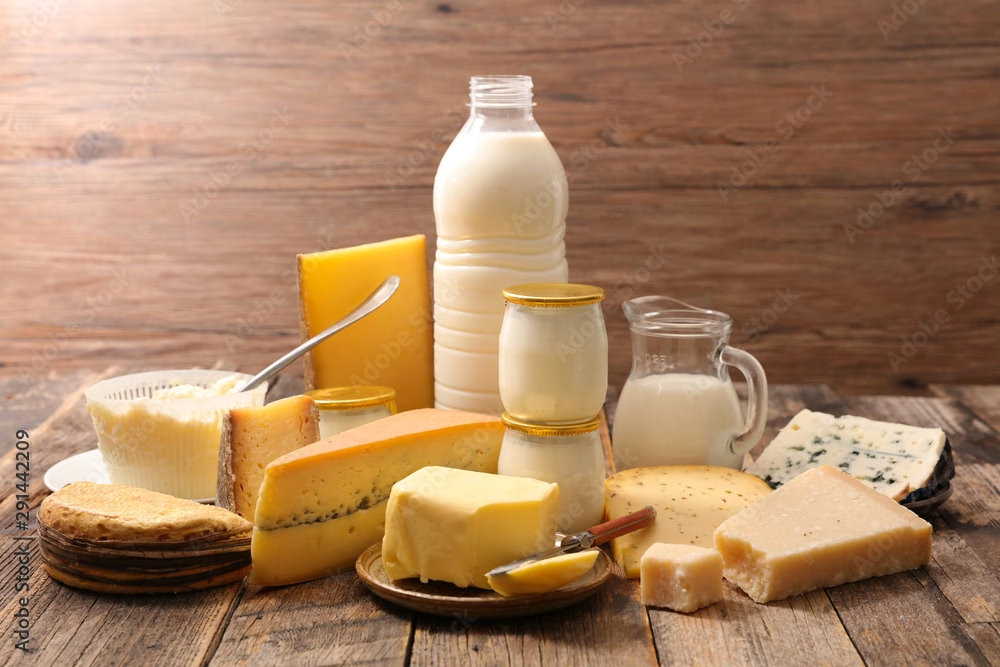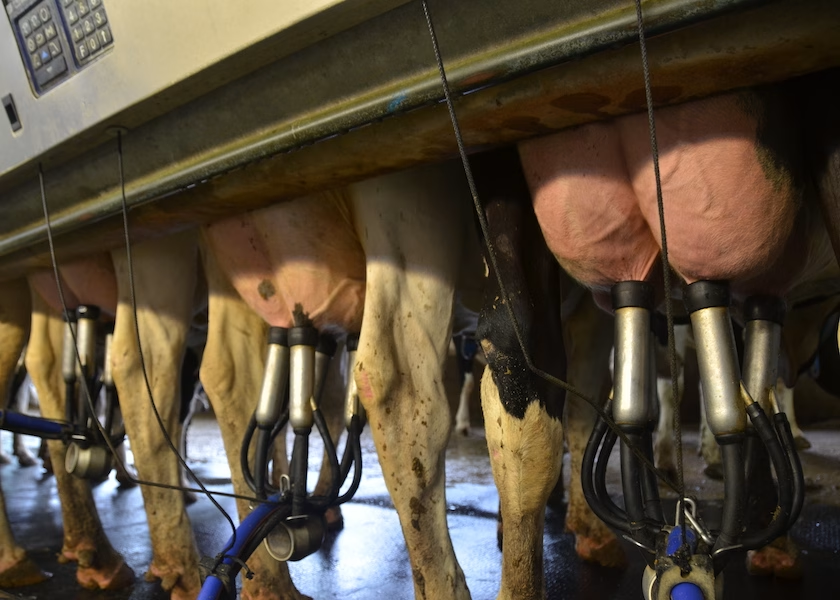Learn how new cheese, butter, and yogurt products are boosting the dairy market even as milk sales drop. Ready to see what’s next for dairy?

While conventional milk sales are down, the dairy industry is undergoing a transition fueled by new products such as cheese, butter, and yogurt. According to CoBank, these products boost the refrigerated dairy aisle to new heights, resulting in considerable sales growth. Expanded taste options, notably Hispanic-style cheese, high-fat butter, and health-conscious yogurt, are critical drivers of this shift. This shift emphasizes changing customer tastes and the dairy industry’s adaptation methods. As processors exploit varied applications, the healthy snacking trend fuels the need for quickly packaged dairy products such as low-fat cheeses, specialized yogurts, and functional dairy beverages. Stressing the necessity of understanding these processes, stakeholders must feel educated and equipped to navigate the future of food and nutrition.
| Category | 3-Year Growth Rate | Sales (in billions) | Notable Trends |
|---|---|---|---|
| Cheese | 15.4% | $25.3 | Increased flavor varieties, rising per capita consumption, growth in Hispanic-style cheese |
| Butter | 43% increase in per capita consumption (over 25 years) | $7.8 | Shift towards European-style butter, higher butterfat content |
| Yogurt | 142% increase in per capita consumption (over 25 years) | $7.1 | Growth in Greek yogurt, shift from breakfast to anytime snack |
| Private Label Dairy | Outpacing premium brands in 10 of 15 categories | Data not specified | Significant growth in yogurt, cream cheese, and cream categories |
US Consumers Propel Dairy Market Growth Amid Declining Milk Sales, Fueled by Innovation and Consumer Trends
Despite declining milk consumption, the dairy sector is expanding rapidly, mainly due to the impact of US consumers. Circana and CoBank data reveal that the refrigerated dairy aisle currently tops retail categories, accounting for $76 billion in sales last year alone. This industry has expanded by 15.4% in the previous three years, generating $10.1 billion in revenues. This increase demonstrates the industry’s endurance and adaptability to changing customer tastes.
Revolutionizing Dairy: Health-Con Drive Demand Voracious Convenience Consumers Nutritional
The dairy business is changing dramatically as customer tastes and buying patterns alter. Modern customers are increasingly health-conscious and want convenient and nutritious items. The desire for healthful, protein-rich snacks is changing the dairy industry. Dairy products, including low-fat cheeses, specialized yogurts, and functional dairy beverages, are ideal for meeting these demands. Innovative dairy processors adapt to this trend by providing accessible and nutritional solutions. These products, which focus on protein content and health advantages, appeal to conventional and new groups looking for healthy, on-the-go snacks. Dairy brands may maintain growth and expand into new markets by aligning with health trends.
Unlocking the Potential: The Cheese Market’s Evolution and Growth Opportunities
The cheese industry has evolved over the last two decades, with per capita consumption tripling to 40 pounds per year. Despite this development, US consumption still lags behind several European nations, indicating potential for additional expansion. This potential is being realized by expanding taste options to appeal to a broader demographic. As US demographics alter, Hispanic-style cheese has emerged as the fastest-growing sector, showing Hispanic customers’ increasing impact.
The Renaissance of Butter: A Testament to Shifting Culinary Preferences and Quality Appreciation
Due to shifting consumer preferences and culinary trends, butter consumption has climbed 43% per capita over the previous 25 years. American customers prefer European-style butter, which has 83% butterfat, compared to the customary 80% in domestic products. This transition has increased the market share of European-style butter and pushed local manufacturers to modify their manufacturing processes. This trend reflects an increasing preference for quality and authenticity in food goods, with butter well positioned to gain.
Reimagining Yogurt: From Breakfast Staple to Anytime Snack and Beyond
Yogurt has evolved from a breakfast staple to a convenient snack or nutritious dessert, resulting in a 142% rise in per capita consumption in the United States over the last 25 years. Greek yogurt, known for its high protein content and creamy texture, has especially captivated the health-conscious market. This move goes beyond convenience and reflects more significant health issues. The popularity of weight-loss medicines drives up yogurt sales as customers seek high-protein, low-calorie solutions. Brands such as Danone have experienced a rise in demand from those actively controlling their weight and health.
Private Labels: Rising Stars in Dairy Aisle Dominance
Private-label offers have emerged as strong competitors in the dairy industry, indicating a change in customer buying habits. As consumers seek price without compromising quality, store brands have emerged as viable alternatives to luxury items. According to Circana statistics, private label sales exceed premium brand sales in ten of the fifteen monitored dairy categories, with noteworthy increases in yogurt, cream cheese, and cream.
Yogurt, for instance, has changed from a morning staple to a popular anytime snack, resulting in solid sales of private-label choices with various tastes and health advantages at reasonable rates. Similarly, cream cheese and cream have grown in popularity, thanks to a concentration on home cooking and baking during lockdowns, as customers strive to replicate culinary experiences.
The rise of private-label dairy products reflects a more significant trend toward simplicity and openness. As customers grow suspicious of extensive ingredient lists in processed goods, private label options, typically seen as having cleaner labels, appeal to health-conscious consumers, especially younger consumers who value minimally processed meals.
Clean Label Allure: Navigating Consumer Preferences Amid Rise of Minimally Processed Dairy Products
Consumer worries about highly processed meals are altering the dairy sector, especially among younger, health-conscious consumers. These customers like ingredient lists that are simple and transparent, as well as items that support their healthy lives. Traditional dairy products, with few additives, might profit from this trend. Milk, cheese, and yogurt inherently reflect the clean label concept, enabling dairy companies to sell their goods successfully. Highlighting the lack of artificial chemicals and preservatives may make traditional dairy products stand out in a crowded store aisle. This approach is consistent with the market movement toward transparency and whole-food nutrition. As plant-based alternatives become more popular, the dairy industry may exploit its clean-label advantage to cater to health-conscious consumers’ changing tastes. This method addresses current consumer concerns while reinforcing dairy’s timeless appeal by combining tradition with new dietary standards.
The Bottom Line
Despite decreased milk consumption, the dairy industry flourishes with novel cheese, butter, and yogurt products that meet customer demands. These commodities dominate the refrigerated dairy aisle, drawing health-conscious and convenience-seeking customers. Our data shows that per capita cheese consumption in the U.S. has doubled in two decades, butter with increased butterfat content has resurged, and yogurt has evolved from a morning staple to an all-day snack. The emergence of private labels, which outperform premium brands in several dairy categories, highlights a trend toward high-quality, low-cost alternatives. Consumers’ demand for less processed, clean-label dairy products opens up potential, particularly among younger populations skeptical of processed meals. Understanding and capitalizing on changing customer tastes is critical to the dairy industry’s success.
Key Takeaways
- The US dairy market is experiencing significant growth despite declining milk sales.
- Cheese, butter, and yogurt are key drivers of this growth, with notable increases in consumption and innovation in these categories.
- The refrigerated dairy aisle leads retail grocery sales, amassing $76 billion over the past year.
- Consumer demand for convenient, health-conscious, and protein-rich dairy snacks is a substantial growth area.
- Private label dairy products are gaining traction, particularly in yogurt, cream cheese, and cream, outperforming premium brands in several categories.
- Younger, health-conscious consumers favor dairy products with clean labels and minimal ingredients, presenting an opportunity for traditional dairy brands to market themselves effectively.
- Dairy processors are innovating to cater to evolving consumer preferences, including expanded flavor varieties and higher butterfat content in butter for enhanced quality.
Summary:
The dairy industry is undergoing a significant transformation due to new products like cheese, butter, and yogurt. Per capita cheese consumption in the U.S. has doubled in two decades, with increased butterfat content resurging. Yogurt has evolved from a morning staple to an all-day snack, and private labels have outperformed premium brands. The industry is adapting to changing customer tastes and buying patterns, with modern customers becoming health-conscious and wanting convenient, nutritious items. Low-fat cheeses, specialized yogurts, and functional dairy beverages are being developed, focusing on protein content and health advantages.












